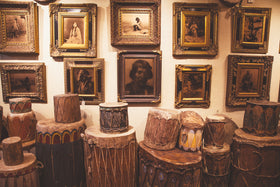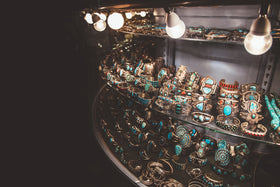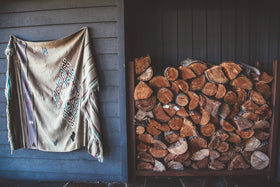Native American Child's Moccasins

Moccasins have been the footwear of choice for Native American tribes since long before they were first encountered by Europeans, and to this day remain a staple of Native people as well as outdoorsmen. The name moccasin comes from the Algonquian word “makasin,” a common shoe-shaped flower.


Moccasins were assembled inside out to hide the seams. Holes were punched with a bone awl and the pieces were stitched together with sinew for thread. Later with the advent of the fur trade the bone awl was replaced with a steel one. The basic construction was very similar across the tribes, with subtle variations in each. A trained scout could tell another’s persons tribe with a quick look at their moccasin or footprint. This was sometimes exploited by warriors, who would don moccasins stolen from a different tribe to deceive the enemy. Some moccasins had fringe, or an animal tail attached to the heel, which trailed behind and helped to camouflage their tracks.


Soft-soled moccasins were common in the Eastern Woodland tribes and were made with one piece of leather stitched together in a center seam. These were called puckered toes. The name of the Chippewa tribe was translated by some to mean “people of the puckered moccasin.” These were well-suited for use in the forest, where leaves and pine needles covered the ground. The cuff around the ankle was often decorated with beading or quilling, or worn upright and tied. Sometimes a separate decorated piece was sewn on top of the cuff, which could easily be removed when the soles wore out and sewn onto a new pair.


Hard-soled moccasins were used in the Western Plains and desert regions and were made from two or more pieces often cutting soles from a worn out parfleche packet. These were more protective, as the tribes in these areas encountered harsh cactus, prairie grass and sharp rocks. Plains tribes often left the cuff undecorated but covered the rest of the instep with geometric beaded patterns. Wedding and burial moccasins were lavishly decorated with beading including the bottom of the soles.


The mother or grandmother would make baby moccasins in preparation for the baby’s birth. We classify our baby moccasins by size from 3 ½” to 4 ½” and child moccasins from 4 ½” to 7”. After 1880 moccasins were sold at the local trading posts. In many cases, without provenance, it is difficult to tell whether a pair of moccasins was made for themselves or for sale. Baby and child’s moccasins are much rarer than adult moccasins as there were fewer made and most worn out.
 Cisco’s has an extension collection of baby and child’s moccasins with representations from Eastern, Plains, Plateau and Southern tribes.
Cisco’s has an extension collection of baby and child’s moccasins with representations from Eastern, Plains, Plateau and Southern tribes. 



